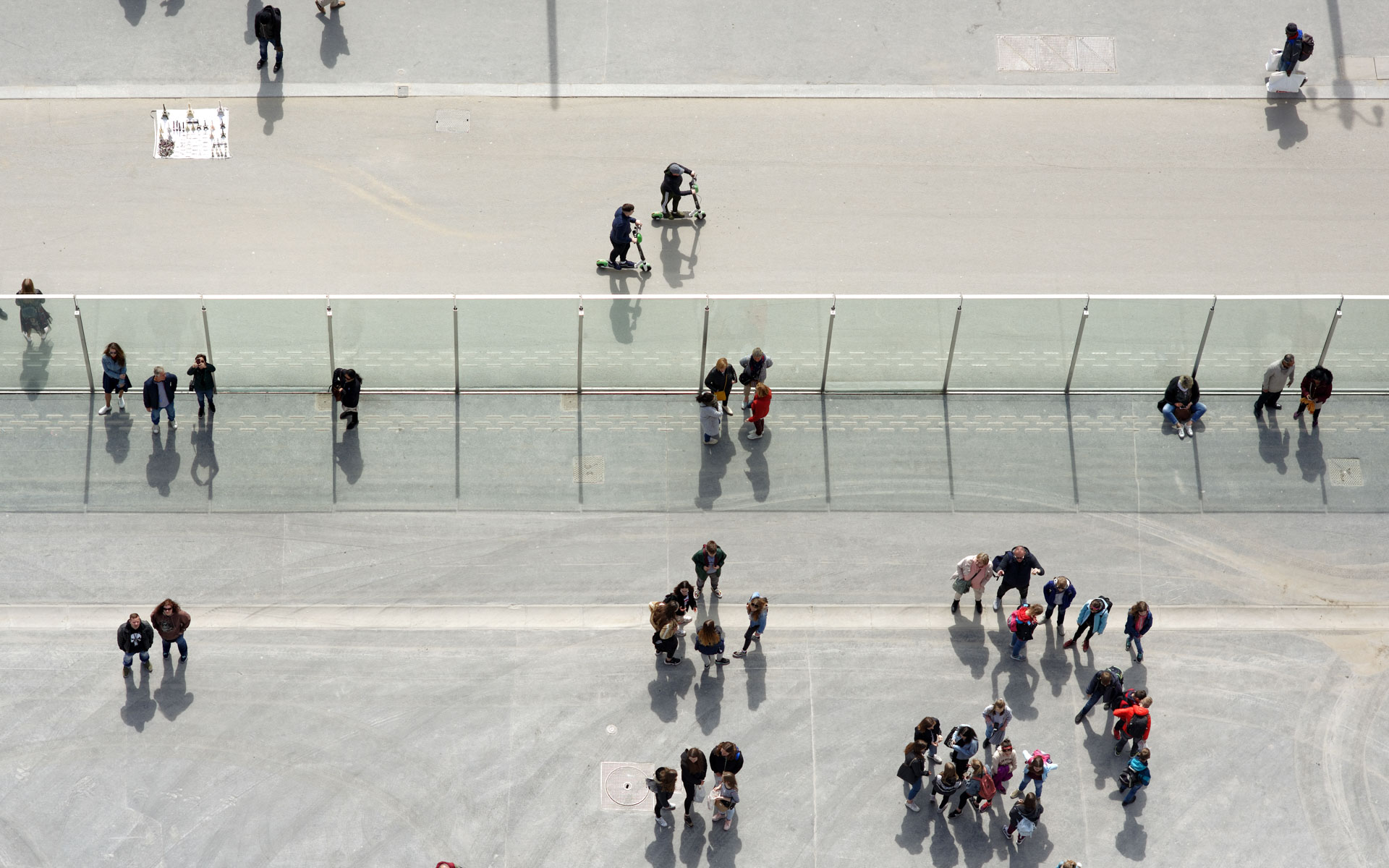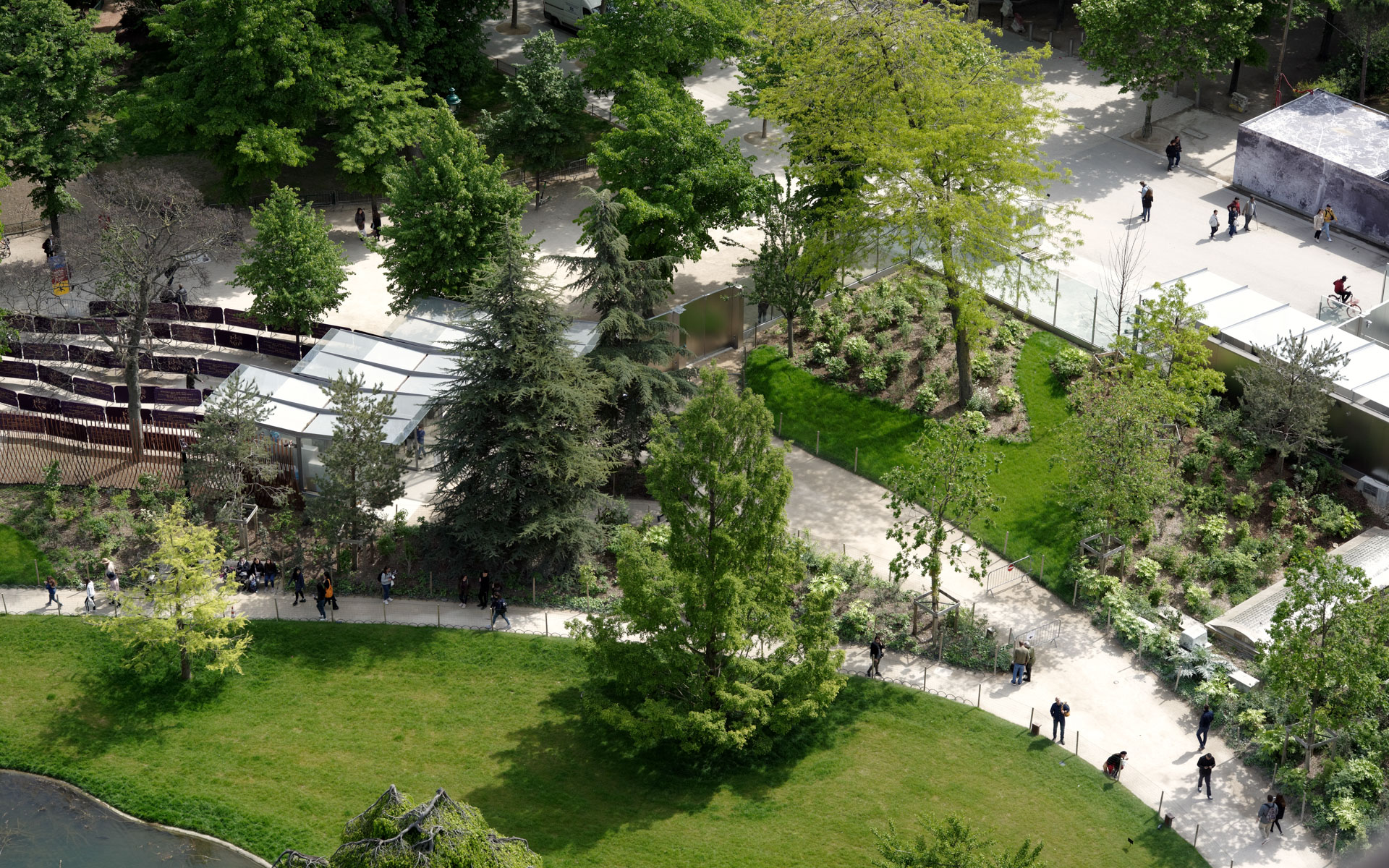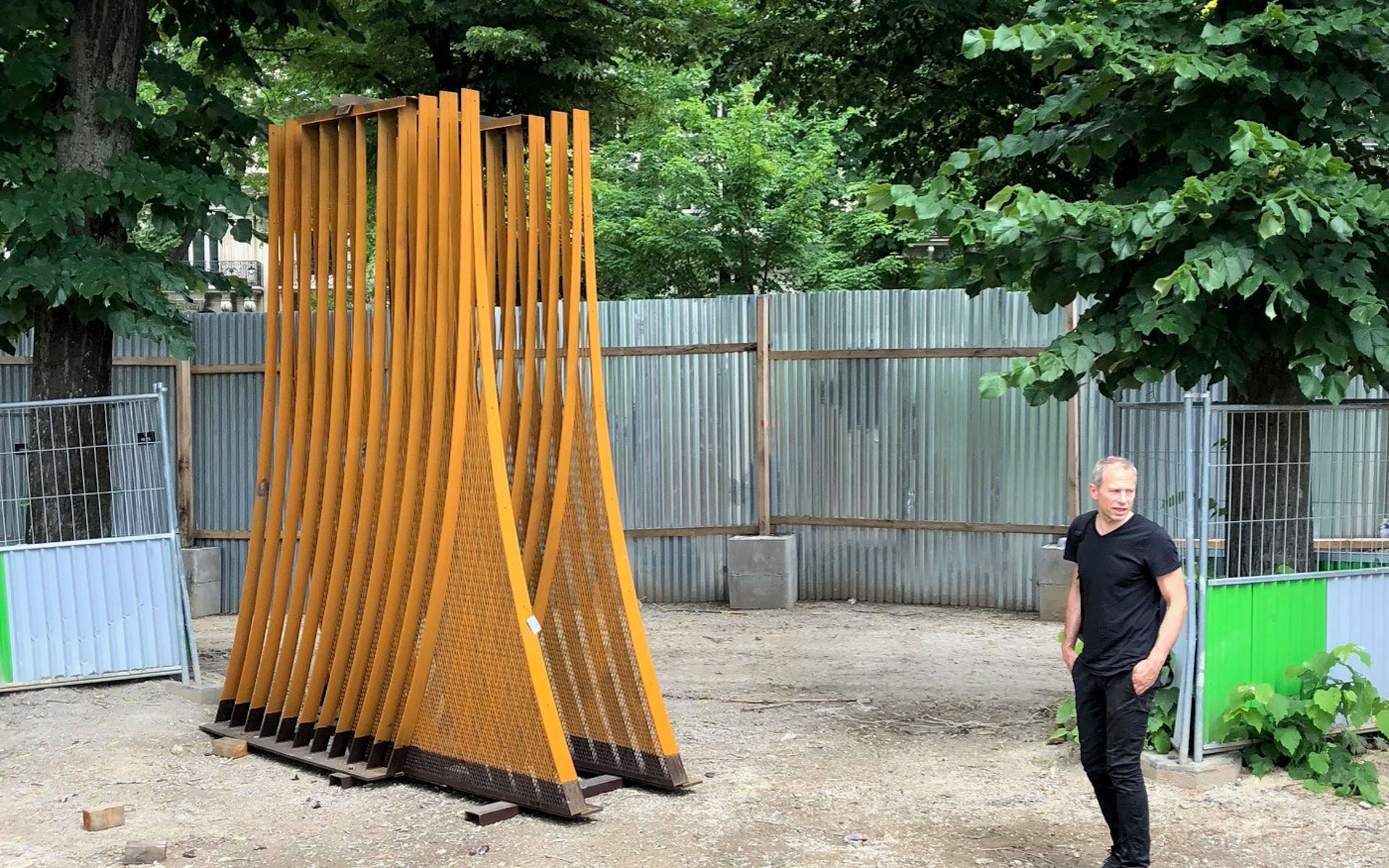












































Eiffel Tower, Entrance, Park, Protection
Paris |
France –
2019
Client
City of Paris, Sete
Start of construction
09 | 2017
Size
41 290 m²
Construction budget
22.8 M €
Competition winner
2017
Completion
05 | 2019
The international competition aimed to enhance the protective measures around the Eiffel Tower, with the goal of not compromising visitors’ experience quality.
The terrorist attacks at the Stade de France in 2015 and during the national bank holiday in Nice in 2016 prompted French authorities to reinforce security in popular places. The objective was to ensure that people could move freely, fearlessly, and feel safe.
The design for these measures stands out due to clarity, structuring of visitor movement, and an enhanced overview for security personnel.
The architecture features glass panels with a thickness of 72 millimeters, structured into six distinct layers. Emphasizing lightness and clarity, the panels are made of a highly transparent, self-supporting glass, firmly anchored to the ground. The intersections between these panels are concealed with plain stainless-steel profiles. These profiles are not only aesthetic but functional, and integrate lighting equipment. The minimalist design is noise-reducing and provides a quiet and atmosphere to the place. Fixed bollards on the streets of Quai Branly and Avenue Gustave Eiffel provide protection against the bustling vehicular traffic.
The entrances to the Eiffel Tower have been reimagined: you enter the area through the carefully restored and faithfully redesigned romantic landscaped garden, created by Swiss landscape architect Vogt, near Eiffel Avenue on the narrow flanks of the park. Six adjacent entrance gates, also made of transparent glass with delicate glass roofs and supported by a thin steel framework, allow two security personnel to control Eiffel Tower visitors.
These entrances are located near the romantic ponds, bordered by a Corten steel fence. The Corten steel elements of the fence measure 324 cm in height – exactly one-hundredth of the Eiffel Tower. Its shape is also based on the tower’s silhouette: this fence widens and stabilizes at the base, rising – akin to the Eiffel Tower – to a common profile.
This challenging-to-assemble fence element, prefabricated in two-meter-wide segments, resembles a folded piece of paper, alluding to the Eiffel Tower and harmonizing with the surrounding flora. In the lower area, this fence, reminiscent of a willow tree, is reinforced with a dense metal mesh. It is also attached to discreetly illuminated and monitored strips of foundation.
The Eiffel Tower symbolizes fundamental French values: liberty, equality, fraternity. Gustave Eiffel was an experienced bridge builder. The tower was constructed using riveted wrought iron, and a total of 7,300 tons of steel were used. Most of the 18,038 individual parts were prefabricated. The Eiffel Tower was, in many ways, progressive and visionary, standing as the world’s tallest structure at the time of its inauguration. It has been classified as a historic monument since 1964, and in 1986, the American Society of Civil Engineers added the Eiffel Tower to its list of historic engineering landmarks. With nearly seven million paying visitors annually, it ranks among the most visited sites in the world.
Lead Architect: Dietmar Feichtinger Architectes
Engineers : Sbp
Landscape planning: Vogt Landscape
Light planning: On
Fluide: Inex
Reversible design
Biodiversity
The terrorist attacks at the Stade de France in 2015 and during the national bank holiday in Nice in 2016 prompted French authorities to reinforce security in popular places. The objective was to ensure that people could move freely, fearlessly, and feel safe.
The design for these measures stands out due to clarity, structuring of visitor movement, and an enhanced overview for security personnel.
The architecture features glass panels with a thickness of 72 millimeters, structured into six distinct layers. Emphasizing lightness and clarity, the panels are made of a highly transparent, self-supporting glass, firmly anchored to the ground. The intersections between these panels are concealed with plain stainless-steel profiles. These profiles are not only aesthetic but functional, and integrate lighting equipment. The minimalist design is noise-reducing and provides a quiet and atmosphere to the place. Fixed bollards on the streets of Quai Branly and Avenue Gustave Eiffel provide protection against the bustling vehicular traffic.
The entrances to the Eiffel Tower have been reimagined: you enter the area through the carefully restored and faithfully redesigned romantic landscaped garden, created by Swiss landscape architect Vogt, near Eiffel Avenue on the narrow flanks of the park. Six adjacent entrance gates, also made of transparent glass with delicate glass roofs and supported by a thin steel framework, allow two security personnel to control Eiffel Tower visitors.
These entrances are located near the romantic ponds, bordered by a Corten steel fence. The Corten steel elements of the fence measure 324 cm in height – exactly one-hundredth of the Eiffel Tower. Its shape is also based on the tower’s silhouette: this fence widens and stabilizes at the base, rising – akin to the Eiffel Tower – to a common profile.
This challenging-to-assemble fence element, prefabricated in two-meter-wide segments, resembles a folded piece of paper, alluding to the Eiffel Tower and harmonizing with the surrounding flora. In the lower area, this fence, reminiscent of a willow tree, is reinforced with a dense metal mesh. It is also attached to discreetly illuminated and monitored strips of foundation.
The Eiffel Tower symbolizes fundamental French values: liberty, equality, fraternity. Gustave Eiffel was an experienced bridge builder. The tower was constructed using riveted wrought iron, and a total of 7,300 tons of steel were used. Most of the 18,038 individual parts were prefabricated. The Eiffel Tower was, in many ways, progressive and visionary, standing as the world’s tallest structure at the time of its inauguration. It has been classified as a historic monument since 1964, and in 1986, the American Society of Civil Engineers added the Eiffel Tower to its list of historic engineering landmarks. With nearly seven million paying visitors annually, it ranks among the most visited sites in the world.
Lead Architect: Dietmar Feichtinger Architectes
Engineers : Sbp
Landscape planning: Vogt Landscape
Light planning: On
Fluide: Inex
Reversible design
Biodiversity

